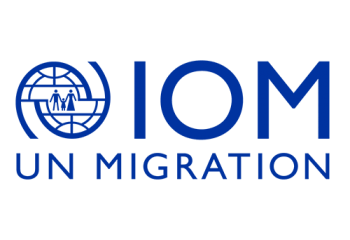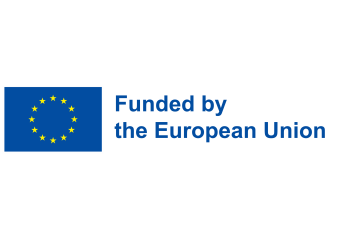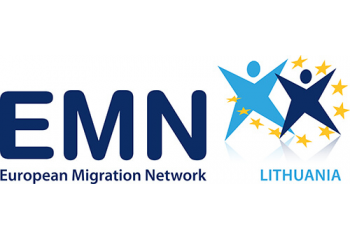Glossary
The EMN Glossary – as one of the key products of the EMN - improves comparability by enabling a common understanding and use of terms and definitions relating to asylum and migration. The Glossary draws on a variety of sources, but primarily on the legislation of the EU asylum and immigration acquis, and makes terms available in the majority of EU Member State languages.
The online version is regularly updated and available in various languages.
- BG: закон за човешките права
- CZ: zákony o lidských právech
- DE: internationale Menschenrechts-normen
- EE: inimõiguste õigus
- EN: human rights law
- ES: legislación de derechos humanos
- FI: ihmisoikeuslainsäädäntö
- FR: droit relatif aux droits de l’homme
- GA: na dlíthe i leith Chearta an Duine, reachtaíocht i leith Chearta an Duine
- HU: emberi jogok
- IT: diritto dei diritti umani
- LT: žmogaus teisių teisė
- LV: cilvēktiesības
- MT: Liġi (Il-) dwar id-drittijiet tal-bniedem
- NL: humanitair recht
- NO: menneskerettslovgivning (b) / menneskerettslovgjeving (n)
- PL: prawo praw człowieka
- RO: legislaţia privind drepturile omului
- SE: lagstiftning till skydd för mänskliga rättigheter
- SK: právo v oblasti ľudských práv
- SL: pravo o človekovih pravicah
The body of customary international law, human rights instruments and national law that recognises and protects human rights.
Refugee law and human rights law complement each other.
- BG: човешки права
- CZ: lidská práva
- DE: Menschenrechte
- EE: inimõigused
- EN: human rights
- ES: derechos humanos
- FI: ihmisoikeudet
- FR: droits de l’homme
- GA: cearta an duine
- HU: emberi jogok
- IT: diritti umani
- LT: žmogaus teisės
- LV: cilvēktiesības
- MT: Drittijiet (Id-) tal-bniedem
- NL: mensenrechten
- NO: menneskerettigheter (b) / menneskerettar (n)
- PL: prawa człowieka
- RO: drepturile omului
- SE: mänskliga rättigheter
- SK: ľudské práva
- SL: človekove pravice
Agreed international standards that recognise and protect the dignity and integrity of every individual, without any distinction.
2. In the EU the preferred term to use is fundamental rights.
- BG: приемащо общество
- CZ: hostitelská společnost
- DE: Aufnahmegesellschaft
- EE: vastuvõttev ühiskond
- EN: host society
- ES: sociedad de acogida
- FI: vastaanottava yhteiskunta
- FR: société d’accueil
- GA: sochaí óstach
- GR: κοινωνία υποδοχής
- HU: befogadó társadalom
- IT: società di accoglienza
- LT: priimančioji visuomenė
- LV: vietējā sabiedrība
- MT: Soċjetà li tilqa’
- NL: gastsamenleving (syn.: gastmaatschappij)
- NO: vertssamfunn
- PL: społeczeństwo przyjmujące
- PT: sociedade de acolhimento
- RO: societate gazdă
- SE: värdsamhälle
- SK: hostiteľská spoločnosť / prijímajúca spoločnosť
- SL: gostujoča družba
In the EU context, residents (both nationals and non-nationals) of a national / regional / local community within an EU Member State.
In accordance with integration being a dynamic, two-way process, the activities undertaken by the host society serve to facilitate the integration of a third-country national according to the Common Basic Principles.
Developed by EMN
- BG: приемаща държава членка
- CZ: hostitelský členský stát
- DE: Aufnahmemit- gliedstaat
- EE: vastuvõttev liikmesriik
- EN: host Member State
- ES: Estado Miembro de acogida
- FI: vastaanottava jäsenvaltio
- FR: État membre d’accueil
- GA: ballstát aíochta
- GR: κ-μ υποδοχής
- HU: befogadó tagállam
- IT: Stato membro ospitante
- LT: priimančioji valstybė narė
- LV: uzņēmējdalībvalsts
- MT: Stat Membru Ospitanti
- NL: gastlidstaat
- NO: vertsmedlemsland
- PL: przyjmujące państwo członkowskie
- PT: estado membro de acolhimento
- RO: Stat Membu gazdă
- SE: mottagande medlemsstat
- SK: hostiteľský členský štát / prijímajúci členský štát
- SL: gostujoča država članica
The EU Member State to which a union citizen moves in order to exercise their right to free movement and residence.
- BG: приемаща страна
- CZ: hostitelský stát
- DE: Aufnahmeland
- EE: vastuvõttev riik
- EN: host country
- ES: país de acogida
- FI: vastaanottava maa
- FR: pays d’accueil
- GA: tír aíochta
- GR: χώρα υποδοχής
- HU: fogadó ország
- IT: paese ospitante
- LT: priimančioji šalis
- LV: uzņēmējvalsts
- MT: Pajjiż li jilqa’
- NL: gastland
- NO: vertsland
- PL: kraj przyjmujący
- PT: país de acolhimento
- RO: ţară gazdă
- SE: värdland
- SK: hostiteľská krajina / prijímajúca krajina
- SL: država gostiteljica
The EU Member State / country in which a third-country national / non-national takes up residence.
Developed by EMN
- BG: тормоз
- CZ: obtěžování
- DE: Belästigung
- EE: ahistamine
- EN: harassment
- ES: acoso
- FI: häirintä
- FR: harcèlement
- GA: ciapadh
- GR: παρενόχληση
- HU: zaklatás
- IT: molestia
- LT: priekabiavimas
- LV: uzmākšanās
- MT: Molestja / Fastidju
- NL: intimidatie
- NO: trakassering / mobbing
- PL: molestowanie
- PT: perseguição
- RO: persecuţie, hărţuire
- SE: trakasserier
- SK: obťažovanie
- SL: nadlegovanje
Unwanted conduct related to racial or ethnic origin with the purpose or effect of violating the dignity of a person and of creating an intimidating, hostile, degrading, humiliating or offensive environment.
- BG: Работна група на високо равнище „Убежище и миграция“
- CZ: pracovní skupina na vysoké úrovni pro azyl a migraci
- DE: Hochrangige Arbeitsgruppe Asyl und Einwanderung
- EE: kõrgetasemine varjupaiga ja rände töörühm
- EN: High-Level Working Group on Asylum and Migration
- ES: grupo de trabajo de alto nivel sobre migración y asilo
- FI: turvapaikka- ja maahanmuuttoasioiden korkean tason työryhmä
- FR: Groupe de haut niveau «Asile et Migration»
- GA: Grúpa Oibre Ardleibhéil maidir le Tearmann agus Imirce
- GR: Ομάδα Εργασίας Υψηλού Επιπέδου για το ‘Ασυλο και την Μετανάστευση
- HU: Magas Szintű Menekültügyi és Migrációs Munkacsoport
- IT: Gruppo di lavoro ad alto livello in materia di asilo e migrazione
- LT: Prieglobsčio ir migracijos aukšto lygio darbo grupė
- LV: Augsta līmeņa darba grupa migrācijas un patvēruma jautājumos
- MT: Grupp ta’ Ħidma ta’ Livell Għoli dwar l-Ażil u l-Migrazzjoni
- NL: Werkgroep op hoog niveau voor asiel en migratie
- NO: høynivågruppen for asyl og migrasjon (b) / høgnivågruppa for asyl og migrasjon (n)
- PL: Grupa Robocza Wysokiego Szczebla ds. Azylu i Migracji
- PT: grupo alto nível asilo e migração
- RO: Grupul de lucru la nivel înalt în domeniul migraţiei şi azilului
- SE: Högnivågruppen för asyl och migration
- SK: Pracovná skupina na vysokej úrovni pre azyl a migráciu
- SL: Delovna skupina visokih predstavnikov za azil in migracije
2. The HLWG's focus is on external relations with third countries, particularly within the context of the Global Approach to Migration and Mobility. Its objective is to strengthen the external dimension of the EU’s asylum and migration policies based on dialogue, cooperation and partnership with countries of origin and transit in the areas of legal migration, irregular migration, migration and development. The Group also prepares conclusions and recommendations on asylum and migration to be adopted by the Council. They carry out an assessment of the political, economic and human rights situation in countries of origin and provide a joint analysis of the causes and consequences of migration.
- BG: no translation
- CZ: riskantní přesouvání
- DE: gefährliche Weiterwanderung
- EE: ohtlik (edasi) liikumine
- EN: harmful onward movement
- ES: movimientos irregulares peligrosos
- FI: vaarallisin keinoin siirtyminen (uudistermi)
- FR: mouvement secondaire dangereux
- GA: athghluaiseacht dhainséarach
- HU: két hely közötti veszélyes átjutás
- IT: spostamento pericoloso
- LT: pavojingas judėjimas pirmyn
- LV: bīstama pārvietošanās
- MT: Mogħdija ’l quddiem dannuża / ta’ ħsara
- NL: no translation
- NO: risikabel viderereise (b) / risikabel vidarereise (n)
- PL: niebezpieczne dalsze przemieszczanie się
- RO: mişcare de avansare periculoasă
- SE: farlig vidareförflyttning
- SK: riskantné presúvanie sa utečencov a migrantov
- SL: škodljivo gibanje, ki gre dalje / Škodljivo gibanje, ki se nadaljuje
The movement of refugees and migrants by dangerous means from one location to another.
This term has only been recently put into use by practitioners.
- BG: висококвалифициран миграант
- CZ: vysoce kvalifikovaný zaměstnanec; vysoce kvalifikovaný pracovník
- DE: hochqualifizierter Migrant
- EE: kõrgelt kvalifitseeritud sisserändaja
- EN: highly qualified migrant
- ES: persona migrante altamente cualificada
- FI: korkeasti koulutettu maahanmuuttaja
- FR: migrant hautement qualifié
- GA: imirceach ardcháilithe
- GR: μετανάστης υψηλης εξειδίκευσης
- HU: magasan képzett migráns
- IT: migrante altamente qualificato
- LT: aukštos kvalifikacijos migrantas
- LV: augsti kvalificēts migrants
- MT: Migrant(a) bi kwalifiki għoljin
- NL: hooggekwalificeerde migrant
- NO: høyt kvalifisert migrant (b) / høgt kvalifisert migrant (n)
- PL: migrant wysoko wykwalifikowany
- PT: Migrante altamente qualificado
- RO: migrant înalt calificat
- SE: högkvalificerad migrant
- SK: vysokokvalifikovaný migrant
- SL: visoko kvalificiran migrant
In the EU context, a third-country national who seeks employment in an EU Member State and has the required adequate and specific competence, as proven by higher professional qualifications.
2. The understanding of who is a ‘highly qualified’ and a ‘qualified third-country national’ varies in the EU Member States, with different definitions and concepts existing. Often these depend on national labour market demands and other national criteria. For more information, see EMN: Attracting highly qualified and qualified third-country nationals, 2013.
- BG: висококвалифицирана заетост
- CZ: zaměstnání vyžadující vysokou kvalifikaci
- DE: hochqualifizierte Beschäftigung
- EE: kõrgelt kvalifitseeritud töö
- EN: highly qualified employment
- ES: empleo altamente cualificado
- FI: korkeaa pätevyyttä vaativa työ
- FR: emploi hautement qualifié
- GA: fostaíocht ardcháilíochta
- HU: Magasan képzett személy / Munkavállaló foglalkoztatása
- IT: lavoro altamente qualificato
- LT: aukštos kvalifikacijos darbas
- LV: augsti kvalificēta nodarbinātība
- MT: Impjieg bi kwalifiki għoljin
- NL: hooggekwalificeerde baan
- NO: sysselsetting av høyt kvalifisert arbeidskraft (b) / sysselsetjing av høgt kvalifisert arbeidskraft (n)
- PL: zatrudnienie pracowników wysoko wykwalifikowanych
- PT: emprego altamente qualificado
- RO: loc de muncă înalt calificat
- SE: högkvalificerad anställning
- SK: vysokokvalifikované zamestnanie
- SL: visoko kvalificirana zaposlitev
(a) in the EU Member State concerned, is protected as an employee under national employment law and / or in accordance with national practice, irrespective of the legal relationship, for the purpose of exercising genuine and effective work for, or under the direction of, someone else;
(b) is paid; and,
(c) has the required adequate and specific competence, as proven by higher professional qualifications.
In some EU Member States, there is a distinction between ‘highly skilled’, referring to someone who has the required adequate and specific competence as proven by higher educational qualifications and / or extensive (vocational) experience; and ‘highly qualified’, referring to someone who has required adequate and specific competence as proven by higher educational qualifications only. In the EU context, however, these terms are considered to be interchangeable.
- BG: хуманитарен статут
- CZ: humanitární ochrana
- DE: humanitärer Schutz
- EE: humanitaarkaitse
- EN: humanitarian protection
- ES: protección humanitaria
- FI: humanitaarinen suojelu
- FR: protection humanitaire
- GA: cosaint dhaonnúil
- GR: προστασία για ανθρωπιστικούς λόγους
- HU: humanitárius védelem
- IT: protezione umanitaria
- LT: humanitarinė (papildoma) apsauga
- LV: humānā aizsardzība
- MT: Protezzjoni umanitarja
- NL: bescherming op humanitaire gronden
- NO: beskyttelse på humanitært grunnlag (b) / vern på humanitært grunnlag (n)
- PL: ochrona o charakterze humanitarnym
- PT: protecção humanitária
- RO: protecţie umanitară
- SE: humanitärt skydd
- SK: humanitárna ochrana
- SL: humanitarna zaščita
A form of non-EU harmonised protection nowadays normally replaced by subsidiary protection, except in some EU Member States.
2. IE has also opted-into the Qualification Directive, and uses the term ‘leave to remain’.
3. In DE, FI and IT, humanitarian protection and subsidiary protection are different concepts. In DE and IT, humanitarian protection is the reception and residence of refugees under international law or on humanitarian or political (DE only) grounds, and in FI, humanitarian protection is granted to foreign nationals who cannot return to their country of origin or country of former habitual residence as a result of an environmental catastrophe or a bad security situation, which may be due to an international or internal armed conflict or a poor human rights situation.
4. In EE, LV, this term is not used.
5. AT and ES use a similar expression, namely ‘residence permit on humanitarian grounds’.
6. In BG, humanitarian protection encompasses subsidiary protection as well as protection granted for other humanitarian reasons (see Art. 9, SG No 52 of 2007).
7. In NO, a residence permit may be granted, even if the other conditions laid down in the Act are not satisfied, provided there are strong humanitarian considerations or the foreign national has a particular connection with the realm. To determine whether there are strong humanitarian considerations, an overall assessment shall be made of the case. Importance may be attached, inter alia, to whether the foreign national is an unaccompanied minor who would be without proper care if they were returned; the foreign national needs to stay in the realm due to compelling health circumstances; there are social or humanitarian circumstances relating to the return situation that give grounds for granting a residence permit; the foreign national has been a victim of human trafficking. (For further information, see Immigration Act of May 2008, Chaper 5, Section 38).


